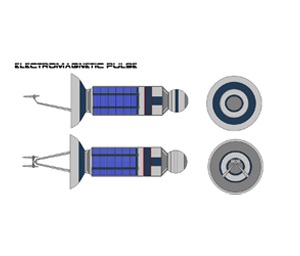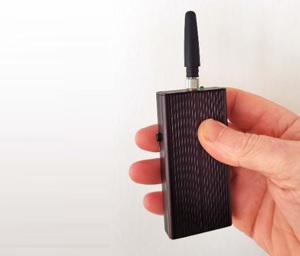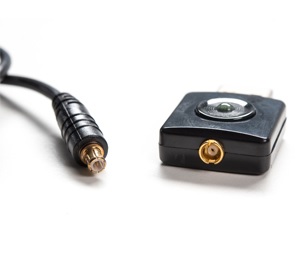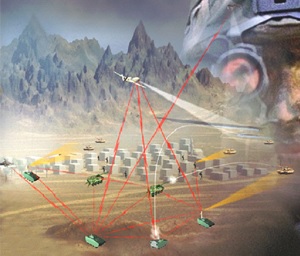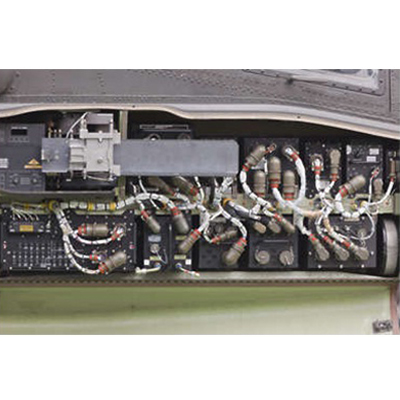Electromagnetic Spectrum Warfare: Tactics and Technologies for Electronic Warfare 19 June 2024

In modern military strategy, electromagnetic warfare (EW) plays a crucial role in securing and maintaining superiority over adversaries. The advent of sophisticated technologies has expanded the capabilities and complexity of electromagnetic spectrum warfare, integrating various tactics and technologies that enhance defense mechanisms and offensive operations. This comprehensive guide delves into the key aspects of electromagnetic warfare, focusing on the application and impact of electromagnetic pulse, signal jamming, cyber warfare, software defined radios, laser weapons, network centric warfare, signal processing, frequency hopping, caller ID spoofing, spread spectrum, spoofing attacks, digital signal processing, biomedical signal processing and control, and electronic surveillance.
The Role of Electromagnetic Pulse in Warfare
An electromagnetic pulse (EMP) is a burst of electromagnetic radiation that can disrupt or damage electronic equipment and infrastructure. EMPs are either naturally occurring, such as those generated by lightning or solar flares, or man-made, often resulting from nuclear explosions or specialized non-nuclear devices. In electromagnetic warfare, EMPs are deployed to disable enemy electronics, communications, and command-and-control systems, thereby crippling their operational capabilities. The strategic use of EMPs can effectively neutralize adversary defenses without causing direct physical harm, making it a preferred tactic in electromagnetic spectrum warfare.
Signal Jamming and Frequency Hopping
Signal jamming is a technique used to interfere with the transmission and reception of radio signals. By overpowering the target signal with noise or other disruptions, signal jamming renders communication channels unusable. This tactic is especially effective in disrupting enemy communications and radar systems. Advanced signal jamming employs frequency hopping, where the jamming signal rapidly changes frequencies to evade detection and countermeasures. Spread spectrum technology is another countermeasure that spreads the signal over a wider bandwidth, making it more resistant to jamming. In electromagnetic warfare, the interplay between signal jamming, frequency hopping, and spread spectrum forms a dynamic battlefield where each side continuously adapts to maintain communication superiority.
Cyber Warfare and Caller ID Spoofing
Cyber warfare intersects with electromagnetic warfare by exploiting digital networks and communication systems. One notable tactic is caller ID spoofing, where attackers manipulate caller information to disguise their identity. This can facilitate spoofing attacks aimed at misleading or deceiving the target, often leading to unauthorized access to sensitive information or systems. In network centric warfare, where information dominance is paramount, defending against cyber warfare tactics like caller ID spoofing and spoofing attacks becomes critical. The integration of electromagnetic spectrum warfare and cyber warfare creates a multidimensional threat landscape that requires robust defensive and offensive strategies.
Software Defined Radios and Signal Processing
Software defined radios (SDRs) are pivotal in modern electromagnetic warfare due to their versatility and adaptability. SDRs can be programmed to operate across a wide range of frequencies and modulation schemes, making them ideal for both offensive and defensive EW operations. The flexibility of SDRs is enhanced by advanced digital signal processing (DSP) techniques, which enable the real-time analysis and manipulation of signals. In particular, biomedical signal processing and control techniques, originally developed for medical applications, are now being adapted for military use to enhance the precision and effectiveness of EW operations. These technologies enable the implementation of sophisticated signal processing algorithms that can detect, classify, and counteract a wide array of threats in the electromagnetic spectrum.
Laser Weapons and Electronic Surveillance
Laser weapons represent a cutting-edge advancement in electromagnetic warfare. These directed-energy weapons use focused laser beams to damage or destroy targets with high precision and minimal collateral damage. The application of laser weapons in EW includes disabling enemy sensors, blinding optical systems, and destroying unmanned aerial vehicles (UAVs). Complementing these offensive capabilities is the use of electronic surveillance, which involves monitoring and analyzing electromagnetic emissions to gather intelligence on enemy activities. Electronic surveillance provides critical information that can inform strategic decisions and enhance situational awareness in network centric warfare.
Integration of Network Centric Warfare
Network centric warfare (NCW) leverages interconnected communication networks to enhance the coordination and effectiveness of military operations. In the context of electromagnetic spectrum warfare, NCW facilitates the seamless integration of various EW tactics and technologies, enabling rapid response and adaptability. The ability to share real-time information across platforms and units enhances the overall combat effectiveness and operational resilience. The synergy between network centric warfare and electromagnetic warfare underscores the importance of maintaining information superiority in modern conflicts.
Conclusion:
Electromagnetic spectrum warfare is a multifaceted domain that encompasses a wide range of tactics and technologies. From the disruptive potential of electromagnetic pulse and signal jamming to the strategic implications of cyber warfare and network centric warfare, EW remains a critical component of modern military strategy. The advancements in software defined radios, laser weapons, signal processing, and electronic surveillance continue to push the boundaries of what is possible in EW, ensuring that forces remain agile and effective in the face of evolving threats. As electromagnetic warfare continues to evolve, the integration of these advanced technologies and tactics will play a pivotal role in shaping the future of military operations.



